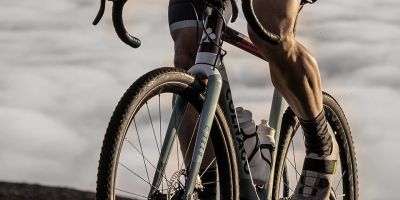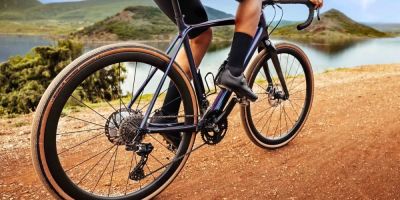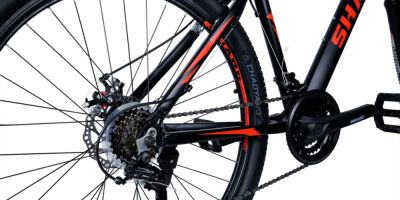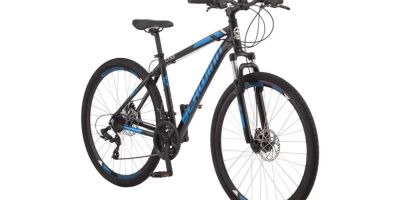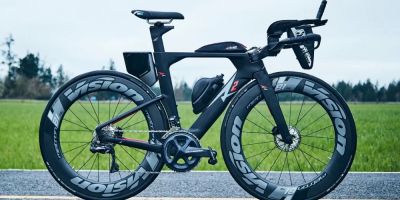Best Bike for Gravel Trails: Choosing the Right Ride for Off-Road Adventures
As an avid cyclist and outdoor enthusiast, one of the most exciting types of cycling I’ve enjoyed recently is riding on gravel trails. These versatile terrains allow for a mix of adventure, nature, and a good workout. But to truly enjoy gravel trail cycling, it's essential to have the right bike. When I first ventured into gravel cycling, I quickly realized that not all bikes are created equal, and choosing the right one can make all the difference in your riding experience. In this guide, I’ll walk you through the best bikes for gravel trails and what to look for when selecting your perfect ride.

Mike's Bikes of Berkeley
1824 University Ave, Berkeley, CA 94703, USA
1. What Makes a Bike Ideal for Gravel Trails?
Before diving into specific bike models, it’s important to understand what makes a bike suited for gravel trails. Gravel biking isn’t the same as road biking or mountain biking; it sits somewhere in between. A gravel bike is designed to handle rough, uneven surfaces while still providing a comfortable ride for long distances. The key features that make a bike ideal for gravel trails are:

Mike's Bikes of Berkeley
1824 University Ave, Berkeley, CA 94703, USA
1.1 Frame Material
The frame material plays a huge role in the bike’s durability and comfort. Most gravel bikes come with aluminum, steel, carbon, or titanium frames. Carbon fiber offers a lightweight design but can be more expensive. Steel frames are robust and offer great shock absorption, while aluminum is a good balance between weight and cost. I’ve personally used a carbon fiber gravel bike and appreciated the lightweight feel, especially on long rides.
1.2 Tire Width and Tread
Gravel trails can be bumpy, muddy, or even sandy, so tire width and tread patterns are crucial for traction and comfort. Wider tires, typically ranging from 35mm to 45mm, offer better stability and grip on loose or uneven surfaces. The tread should also be aggressive enough to provide traction but not so deep that it slows you down on smoother sections of the trail. I’ve found that tires with a moderate tread work best for most gravel trails, as they give me a good balance of grip and speed.
1.3 Geometry
Gravel bikes often feature a more relaxed geometry compared to road bikes, with a longer wheelbase and slacker angles. This provides more stability on rough terrain and comfort for longer rides. When I started gravel biking, I immediately noticed how much more comfortable I felt on a gravel bike with a relaxed geometry, especially when riding for hours at a time.
2. Best Gravel Bikes for Off-Road Adventures
Now that we know the important features to look for, let’s talk about some of the best gravel bikes on the market. These bikes are designed to handle rough terrain and provide a smooth ride, even on the most challenging gravel trails.
2.1 Specialized Diverge
The Specialized Diverge is one of the top contenders when it comes to gravel bikes. With its lightweight carbon frame and Future Shock suspension system, it absorbs bumps effortlessly, giving you a smooth ride even on the roughest gravel trails. I’ve used the Diverge on various trails, and its versatility really stands out. Whether it’s loose gravel, dirt, or even light mud, this bike handles it all with ease.
2.2 Trek Checkpoint
The Trek Checkpoint is another excellent choice for gravel riders. Known for its durability and high-performance features, the Checkpoint offers both steel and carbon options, depending on your budget and needs. One of the standout features is its adjustable geometry, which allows you to customize the fit for added comfort. I love the versatility of the Trek Checkpoint, especially for longer rides where comfort is key.
2.3 Cannondale Topstone
If you’re looking for a bike that can handle the roughest gravel trails without breaking the bank, the Cannondale Topstone is a solid option. Its aluminum frame is both durable and affordable, and its wide tire clearance allows for larger tires for better traction. The Topstone also comes with a unique Kingpin suspension system that provides extra comfort during off-road adventures. I’ve personally ridden the Topstone on multiple gravel trails, and it’s always provided a stable and enjoyable ride.
2.4 Giant Revolt Advanced
The Giant Revolt Advanced is a high-performance gravel bike built for those who want a lightweight and fast ride. Its carbon frame provides excellent strength-to-weight ratio, and the bike features a smooth ride even over rough terrain. The Revolt Advanced is great for riders who want to push their limits on gravel trails while still enjoying a comfortable ride. I found this bike to be particularly great for fast-paced rides, where speed is just as important as comfort.
3. Things to Consider When Buying a Gravel Bike
When purchasing a gravel bike, it’s important to keep a few additional factors in mind to ensure you’re getting the best bike for your needs:
3.1 Budget
Gravel bikes can range in price, from affordable models under $1,000 to high-end options that cost upwards of $5,000. Set a budget based on your experience and the type of trails you plan to ride. I started with a more affordable bike and gradually upgraded as I got more serious about gravel riding. Remember, the best gravel bike for you doesn’t have to be the most expensive one; it just needs to meet your needs.
3.2 Fit and Comfort
When buying a gravel bike, comfort is key. The right fit can make a huge difference on long rides. Make sure the bike suits your riding style and body type. A proper fit ensures better handling, reduces fatigue, and improves your overall riding experience. I always make sure to get a professional fitting whenever I buy a new bike to ensure maximum comfort and performance.
3.3 Durability and Maintenance
Gravel bikes are built to endure rough conditions, but that doesn’t mean they’re invincible. Consider the durability of the frame and components, as well as how easy it will be to maintain. Some bikes come with higher-end components that may require more maintenance, while others offer more budget-friendly options that can still hold up over time. I recommend regular maintenance and care, especially if you ride frequently.
4. Conclusion
Choosing the best bike for gravel trails ultimately comes down to your riding style, comfort, and budget. There are many excellent gravel bikes on the market, and whether you’re a beginner or a seasoned pro, there’s a bike out there that’s perfect for your needs. Take the time to research the options, consider what features matter most to you, and test out a few bikes before making your decision. Happy riding!

